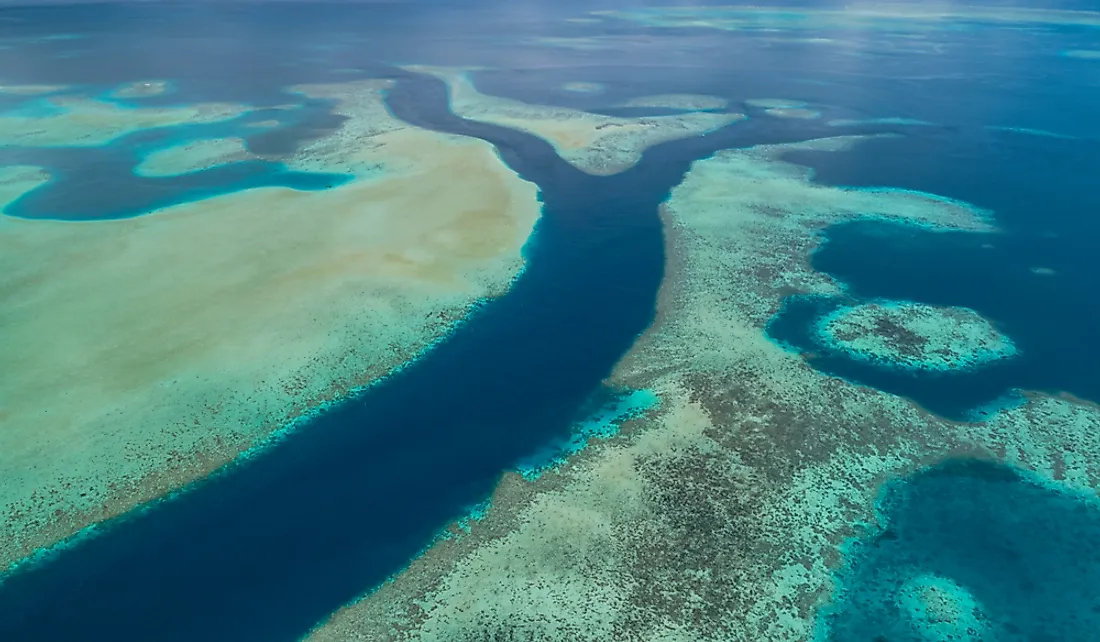What Percentage Of The World's Ocean Area Is Protected?

Tracts of land around the world have been designated as protected areas due to their natural, cultural, or ecological value. Governments are also beginning to protect marine areas known as Marine Protected Areas (MPAs). The United Nations (UN) has set a goal for 10% of the world's oceans to be protected by 2020. Currently, reports show that about 2-5.7% of the world's oceans are protected areas.
Ocean's of the World
There are five major oceans of the world, namely the Pacific, Arctic, Southern (Antarctic), Indian, and Atlantic Oceans. In total, the world’s oceans cover about 71% of the earth’s surface and contain 97% of the total water on earth. The World Ocean is so big that some experts claim that humanity has explored less than 5% of the total ocean.
Marine Protected Areas
The international guidelines for MPAs are set by the International Union for the Conservation of Nature (IUCN). The IUCN then keeps track of all the countries adhering to the guidelines and records this information in the World Database of Protected Areas (WDPA). Simply defined, an MPA is a protected area of the sea, large lakes, estuaries, or oceans. Usually, MPAs ensure that there is limited human activity around those areas all in the name of conservation of the resources.
The 10% Goal Set by the UN
Close to a decade ago, the United Nations came up with a goal to make sure that 10% of the global ocean is protected by the year 2020. This goal came about after the realization that MPAs are crucial to the health of the environment. Some of the benefits of MPAs include the maintenance of biodiversity, protection of endangered species, stocking fishers, and other benefits.
According to the executive secretary for the Convention on Biological Diversity, at a UN conference held in June 2017, about 5.7% of the global ocean is protected. Essentially, the UN was stating that the world was already halfway there in achieving the 10% goal by 2020.
Is This True?
However, newer studies suggest that the figure quoted by the UN was extremely generous. A study published last year in Marine Policy suggested that the world had not achieved half of the goal set forth by the UN. The study was conducted by a team of scientists in conjunction with partners like National Geographic.
According to a study published in Marine Policy, the UN included areas that were not fully MPAs. In other words, the UN included areas that were in different stages of being transformed into MPAs. Some areas were almost fully protected while others were in the early stages of the transformation. In some cases, the stage of transformation was as early as the proposal stage. In other cases, the areas were still being discussed and the decision to turn them into MPAs had not yet been approved.
Part of the problem with the UN report came from the report prepared by the IUCN in the WDPA. The WDPA records what individual countries report, which may not always be factual information. Another problem comes in with the understanding of the phrase “marine protected area.” The very classification by the IUCN allows for a broad range of activities to go on inside an MPA, which may also explain the erroneous reporting by some countries. Some of the activities that have been included by the IUCN for an MPA include restricted access to the areas and zones that permit fishing in a sustainable manner.
More Realistic Figures
After conducting the study and establishing the misleading nature of the UN report, the researchers came up with their own assessment. According to them, only 3.6% of the global ocean was in an MPA. In addition, they found that only 2% of the global ocean was in an MPA that had access restrictions. The areas that are completely restricted provide scientists with the perfect opportunity to use them as control experiments. Consequently, they can better come up with ways of protecting areas that have been subjected to human influence.
Meeting the Goal
As stated earlier, the UN wishes to have 10% of the World Ocean under protection by 2020. However, even if the report by the UN were a true reflection of the situation, then it is clear that the world will not meet the 10% goal in one year. According to experts, 10% is hardly enough even if the countries in the world were to meet the goal. Most scientists in the field agree that at least 30% of the world's oceans need to be protected.
Reaching the 10% goal is difficult for a number of reasons. According to the IUCN, an MPA is a region that has restricted access. Designating MPAs in regions with little human activity is fairly easy, such as the case of Midway Atoll, an MPA of the United States. Countries whose economies depend on fishing will have a tough time implementing the MPA as they will be potentially cutting off or reducing a significant stream of income. According to studies, more than half of the global ocean is being actively exploited by the fishing industry.
Benefits of Protecting the Ocean
Creating MPAs has plenty of benefits. First, MPAs serve to protect and maintain biodiversity by making sure that endangered species have suitable sanctuaries. In addition, they seek to provide a safe habitat for young sea life that has not properly matured to the level of being fished commercially. Secondly, it has been suggested that MPAs may play a part in protecting marine life against environmental hazards such as global warming and pollution. MPAs also help in allowing damaged ecosystems to recover after being negatively influenced by human beings. By allowing the ecosystems to recover, the amount and size of fish caught within and around the MPAs go up.











